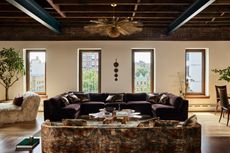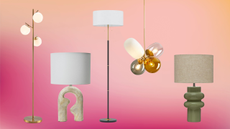Paint Tricks for Small Rooms – 11 Ways Color Can Boost the Sense of Space
These paint tricks for small rooms can turn awkward, tiny rooms into the most eye-catching spaces, and make them seem larger than they are
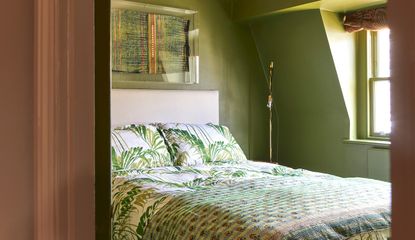

Clever paint tricks for small rooms can transform pint-sized spaces into ones filled with personality. In a lot of cases, you can use paint to create the illusion of boosted space but there's also a growing trend for turning small rooms into 'jewel boxes', making them feel dark, luxurious, and cocooning.
'Paint is such an easy and inexpensive way to have a powerful visual impact on your space,' explains interior designer Lane McNab. 'For small rooms, it’s less about the exact color you choose and more about how you apply the paint.' With that in mind, we asked interior designers for their go-to paint ideas when it comes to painting a small room. Here's what they told us.
1. Consider an accent wall
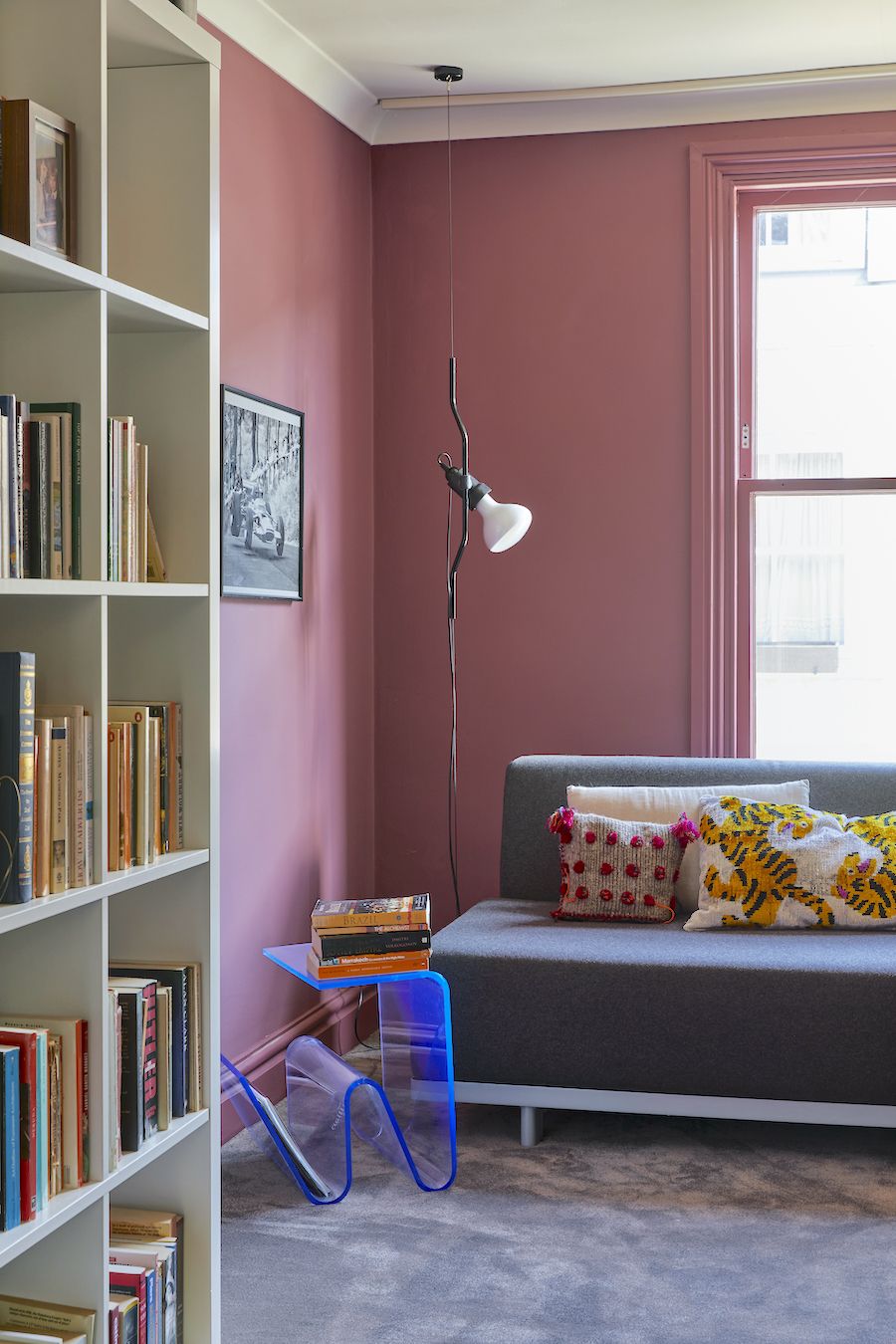
A great approach is to paint one accent wall to give the small room more depth, as it hinges entirely on contrast by comparison. Some designers say a dark accent wall in a room painted otherwise light can work magic for a small space. But how does a dark accent wall make a room feel bigger?
'A dark accent wall can appear to recede, making the space feel larger and more expansive,' says interior designer Kathryn Findlay, founder of Studio Findlay.
2. Keep it light

Your first instinct to take a small, dark room and paint it white may not necessarily be the worst idea to make it feel as big and bright as possible. 'Tones such as cream, off-white or beige are great to use in interiors, to open up spaces as these do not have the dark visual weight of organic browns or the clinical quality of a pure white,' says,' Jarret Yoshida, a Brooklyn brownstone interior designer. 'Cream or beige is that warm background color that provides us with the idea of the blank slate and warmth.'
Muted tones aside, there are a few clever ways to get the most out of your paint finish.
What is a full spectrum paint? This tends to be used to refer to a paint that doesn't contain any black (where most paint colors do). This makes this paint more reflective in light shades, and richer and deeper for other colors. Full spectrum paints used to be more of a niche product, but with ranges like Benjamin Moore's Aura now available, it's far more accessible.
3. Or go dark
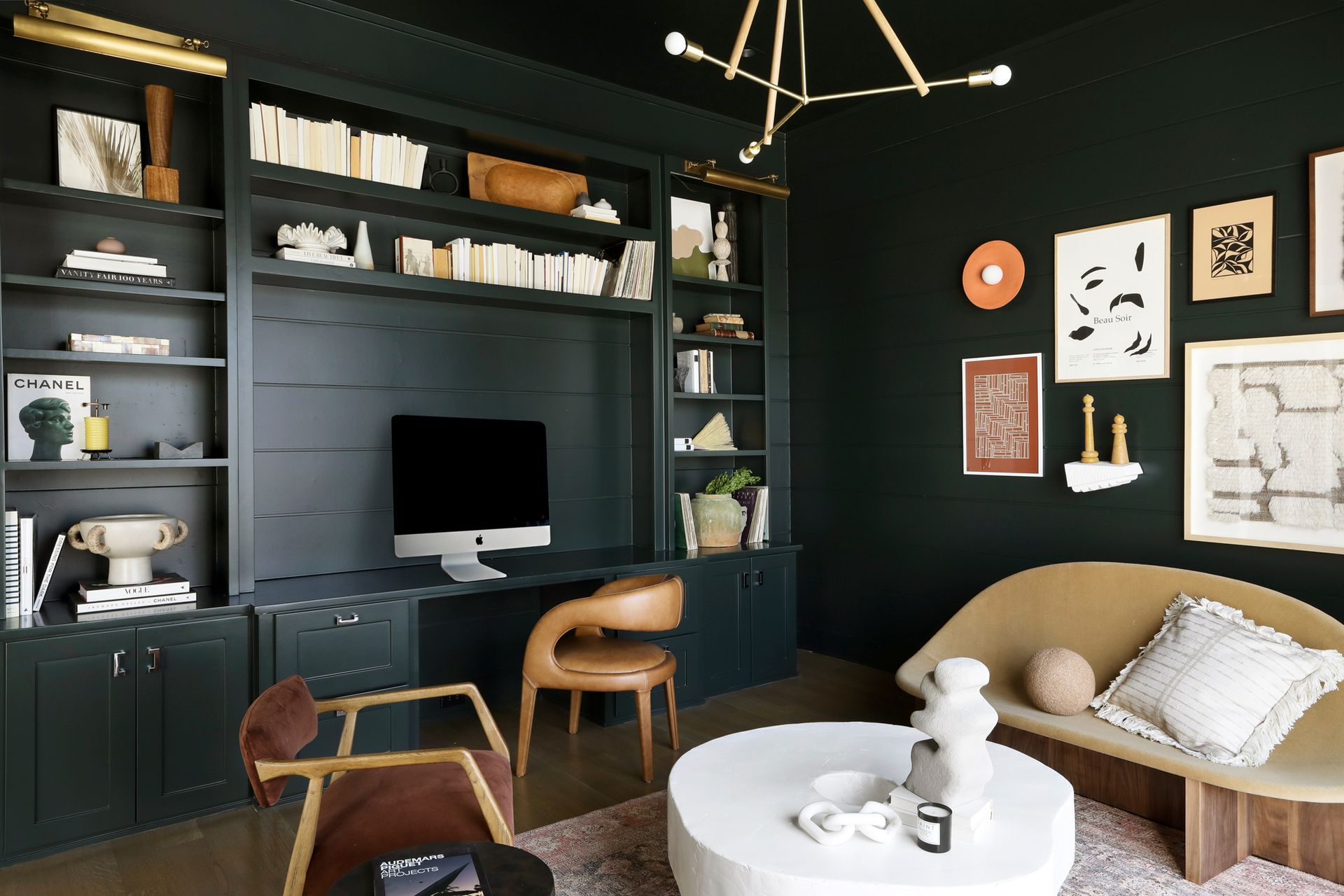
Rather than fighting the natural characteristics of a small, dark room, many interior designers are now leaning in to embrace the darkness for a more dramatic, less apologetic space
'Lean into the cozy factor,' suggests Jamie Gasparovic, owner and principal designer at Studio Gaspo. 'Pick a darker, moodier shade and paint the walls, trim, and ceiling the same color. It creates such a vibe in the room, and is a very intentional way to elevate the design of a small room with paint.'
In one way, a dark color scheme can also make a small room feel less claustrophobic. 'Darker colors also will highlight windows and views to the outside,' explains Lane, 'which can help keep a small room from feeling confined.'

Recommended Primer & Undercoat: Dark Tones
Price: $40 for 0.75 liters
To add a big boost of personality to a small space, consider this pure black shade that almost has a velvet quality.
4. Paint a white ceiling with dark walls
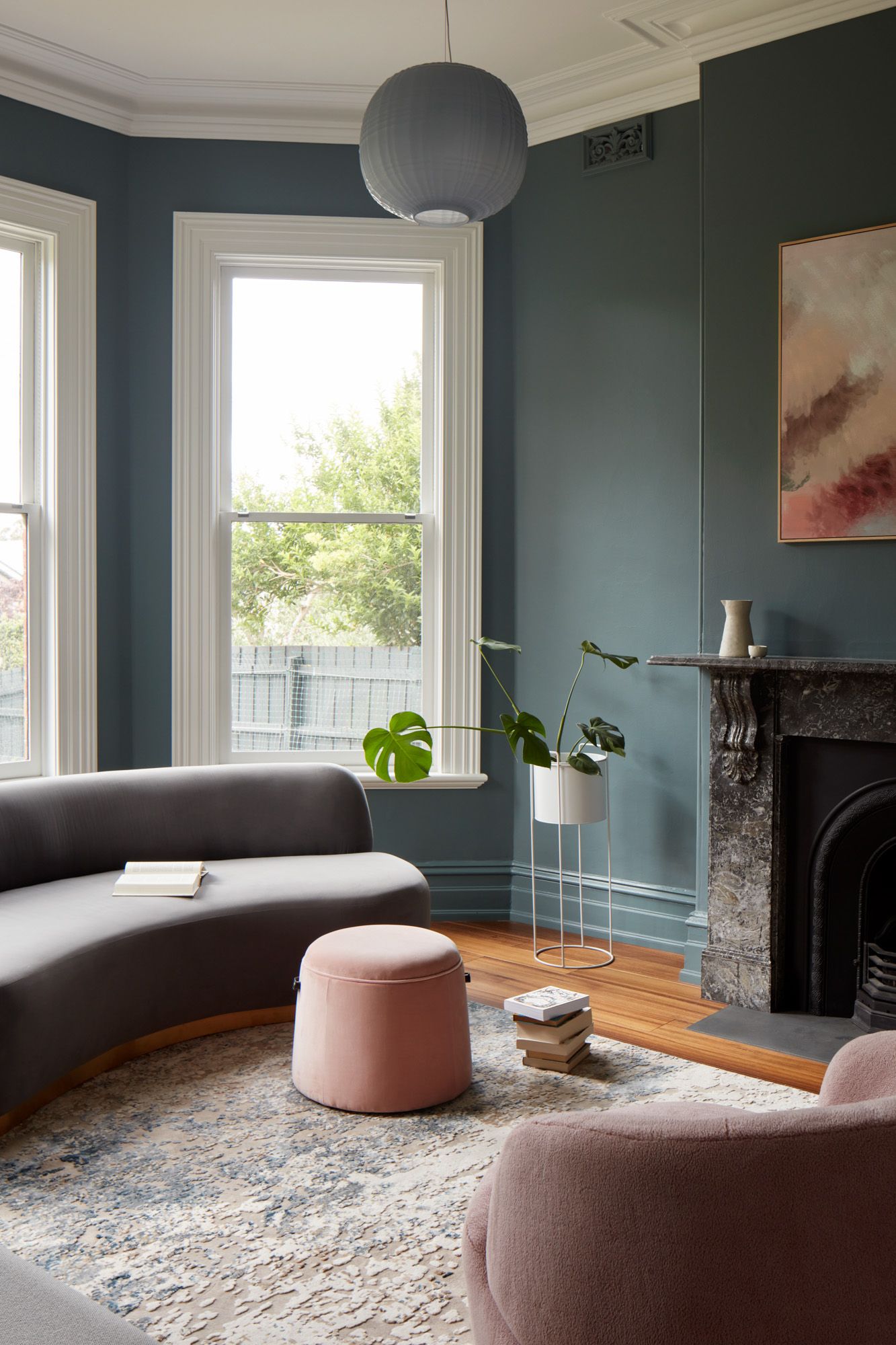
When you're trying to make a small room feel bigger, your ceiling is a good place to start. It can be hard to get to grips with what effect a painted ceiling can have on your space. If dark colors draw a room in, for example, surely you should always paint a ceiling white, no?
With the right color on the walls, this is a tried and trusted trick. 'For low ceilings, going dark on the walls and then painting the ceiling a light color will make the room feel airier and the walls taller,' says Lane.
5. Don't shun color

The idea of keeping it simple in a small room might sound appealing, but according to interior designers Jenna Choate-James and Mariana Ugarte of Interior Fox, more vibrant paint color ideas can be a useful tool in changing your perception of a room.
'The use of a bold pop of color in a small space will make it feel ten times larger,' the designers explain, 'especially when carried onto the ceiling. The color adds depth to your walls when oftentimes our clients think the opposite.'

Paint type: Acrylic
Price: $75 for 3 liters
This yellow-orange color is inspired by Bottega Veneta boots & rubber bands and can add a big boost of personality to any room.
67. Skew perspective with half painted walls
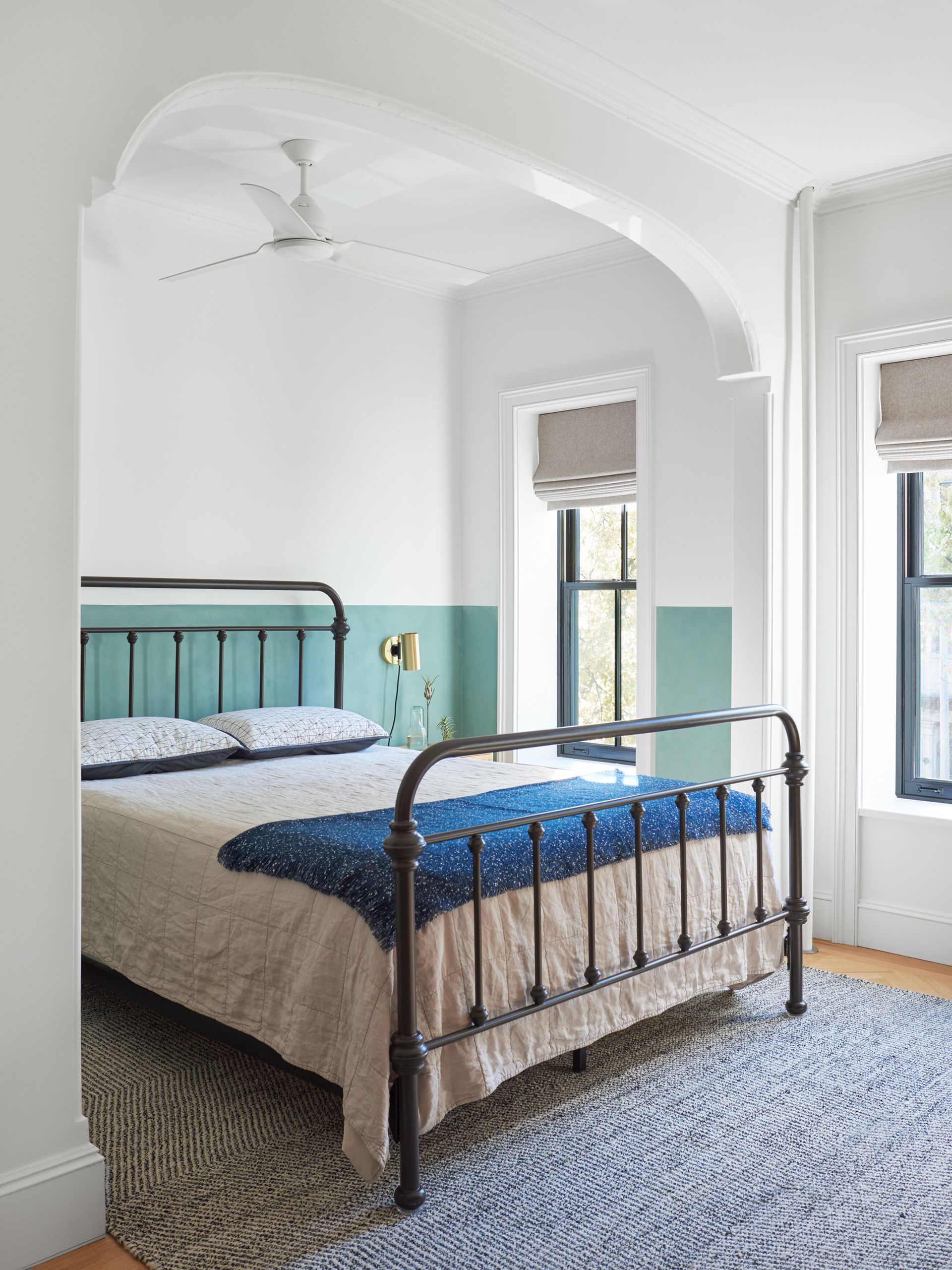
If you're considering a half-painted wall, whether it's just with paint, or combined with wall paneling or wainscoting, it's important to know how the height you choose will affect how you perceive the dimensions of the room. According to interior designer Rudolph Diesel, the key is to keep the color bottom heavy.
'Simply paint the bottom third of your room in one shade (this should be significantly darker or a different tone to the rest of the walls) and the remaining two-thirds a light shade, such as light grey or off-white,' Rudolph explains. 'This trick works as your eyes are drawn to the darker or brighter tone at the bottom of the wall which then makes the rest of the space between the wall and the ceiling seem longer, skewing the room's perspective and making it seem much taller than it is.'
7. Camouflage awkward architecture

Small rooms often come with other drawbacks related to their compact footprint, but ones that might also be able to be remedied with paint. 'Awkward architectural elements can be minimized with paint too,' suggests Lane. 'For instance, that awkward corner fireplace that seems misaligned or maybe has unattractive tile will disappear if you paint the wall around it a similar color to the tile.'
'You can minimize asymmetry with careful paint techniques for walls that add the illusion of additional width or height,' Lane adds.

Type: Water-based paint
Price: $70 for 3 liters
Choose this bottle of green paint with golden-yellow undertones to add warmth to any space. The color is elegant and makes you feel instantly restored.
8. Match your wall color with your furniture
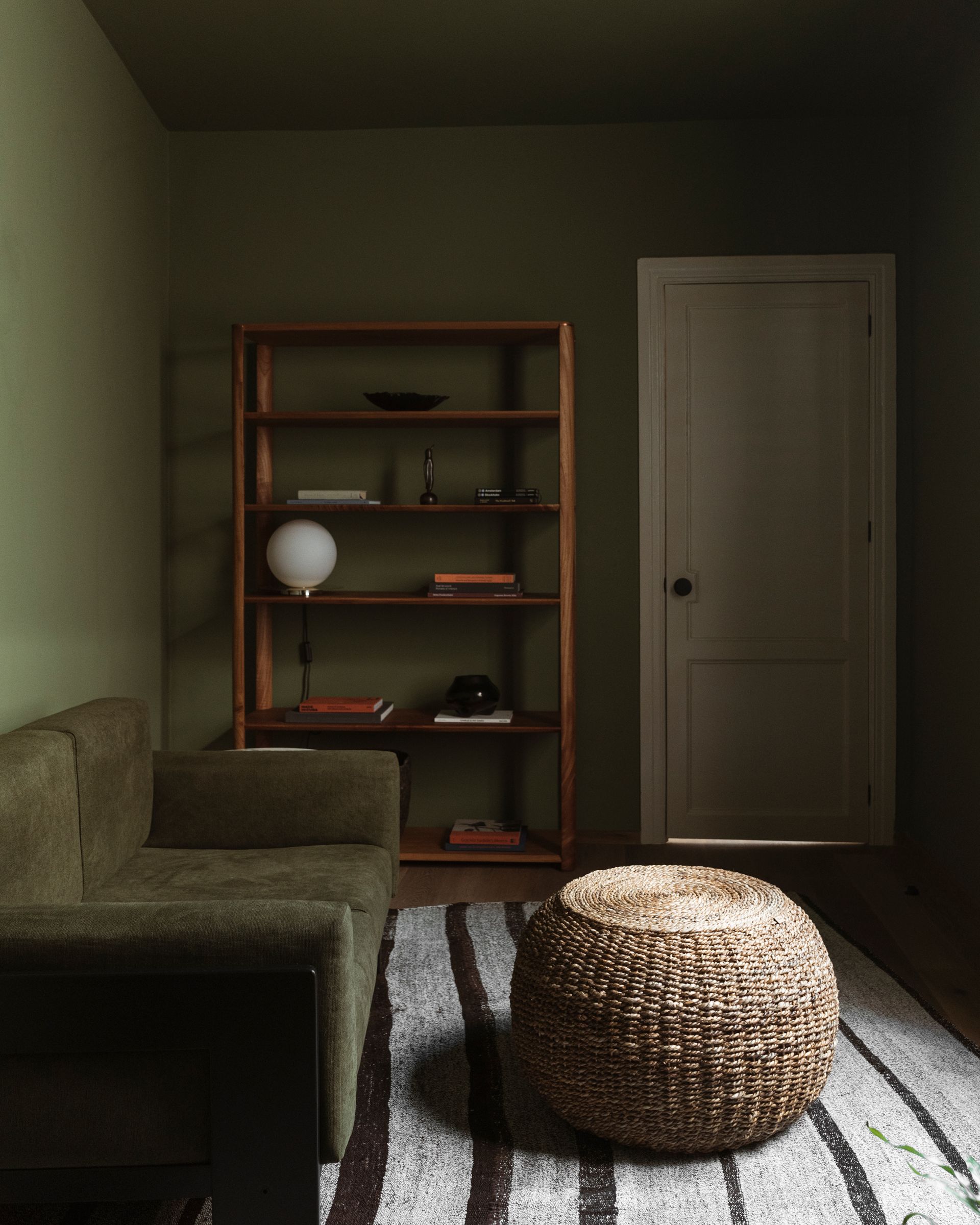
Many of the ideas surrounding small rooms link back to the idea of color drenching, even when it comes down to choosing the furniture to match your room's color palette. 'People are looking for a bright feel to their homes, but want the painting and lighting to feel warm, cozy, and inviting,' says interior designer Jennifer Davis. 'To go lighter, cleaner, and warmer, it's best to color the furniture and walls the same tone.'
Think about this idea for something like a small apartment living room in particular, where a sofa is going to be a dominant feature of the space. By choosing a dark green sofa to match the dark green walls in this home, designer Chloé Mason Gray helps it recede into the background.
9. Paint the doors and trim
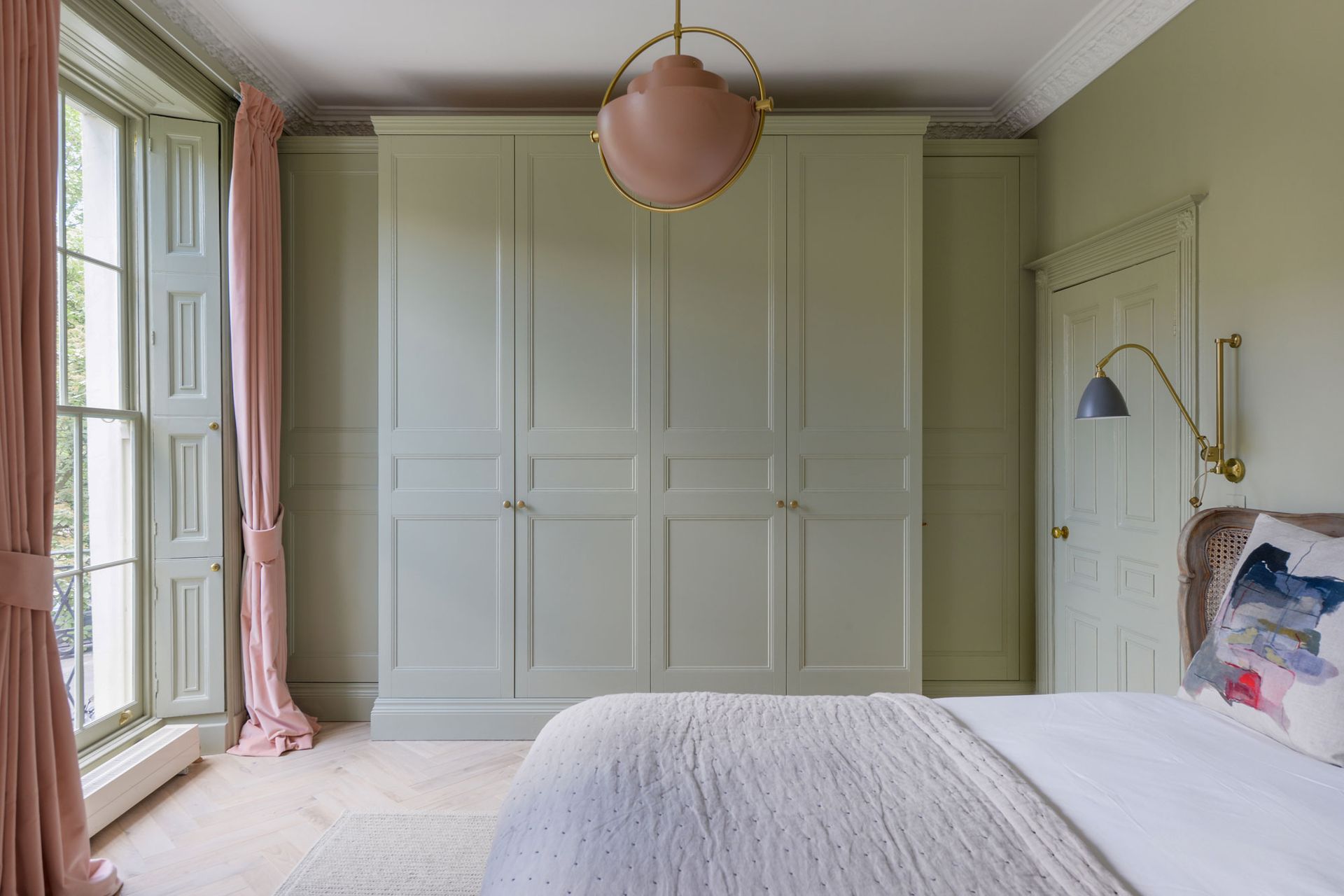
The big question is – should doors be painted the same color as the walls? The answer is probably yes if you're dealing with a small space. It all comes down to reducing the visual clutter of a room, and by painting the doors, trims, and more the same as the walls, you can stop these elements from overpowering the room.
In this sage green bedroom, Stephen Nash, creative director of All&Nxthing Interiors, used the same paint color on the walls, doors, trim, and built-ins, 'packing a lot in while ensuring it remains feeling like a peaceful, pared-back space,' says Stephen.
10. Consider reflective paint finishes
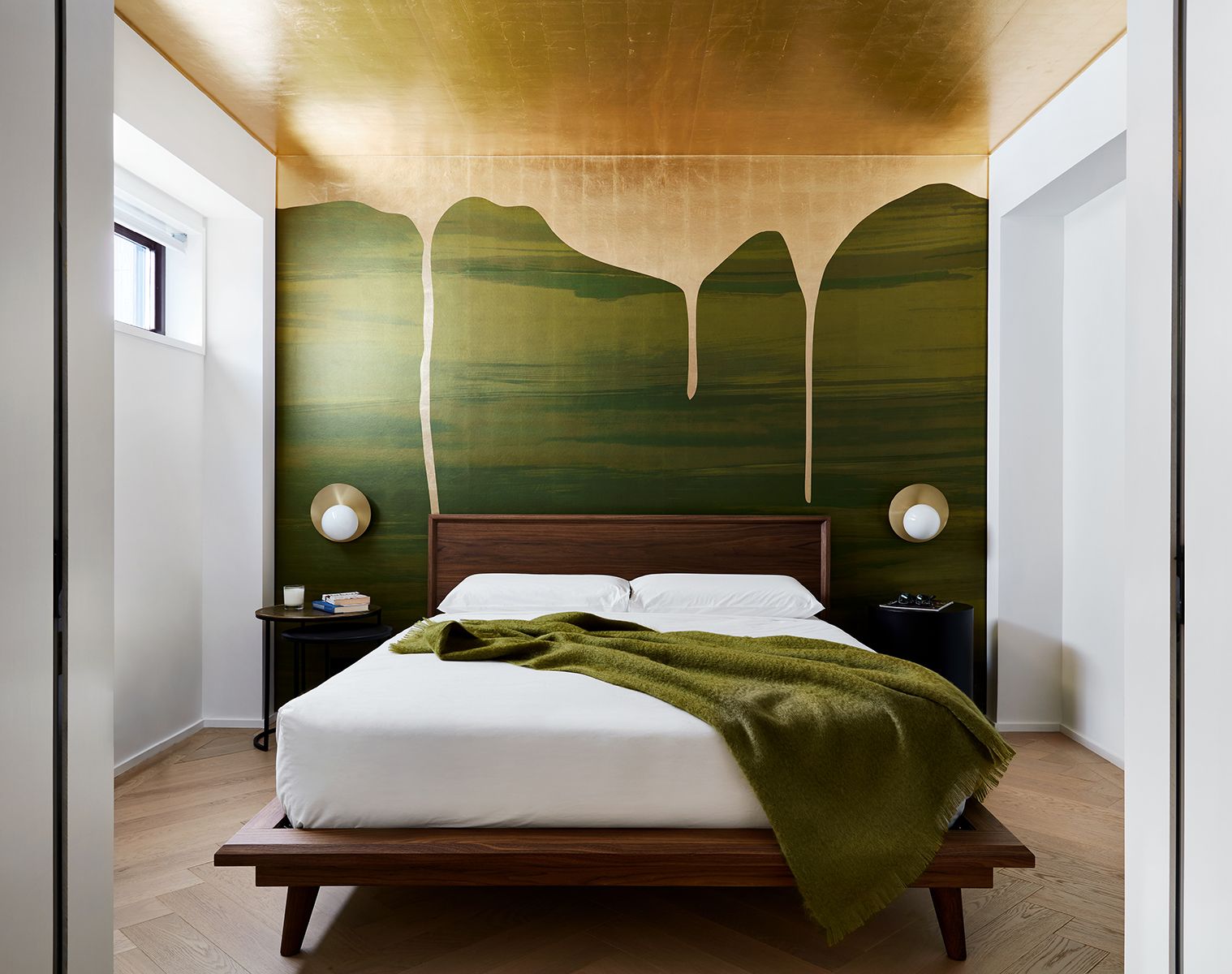
A more reflective paint finish can help a small space not only feel a little brighter but give it more of a sense of depth, too. However, don't go reaching for the gloss paint right away, says Rudolph. 'Semi-gloss paint can help reflect light into the space but not highlight any imperfections,' Rudolph explains.
Or, consider an even bolder approach. 'Consider metallic paint or wallpaper on the ceiling too for a little reflective element that makes the eye feel like the sun is shining down,' suggests Lane.
11. Paint the ceiling the same as the walls

When you're trying to make a small room feel bigger, a good approach is with a painted ceiling and walls. A dark color can create a jewel box effect, and make the space feel cocooning and welcoming.
'Farrow & Ball's Hague Blue was chosen to color drench the bathroom and create a real punch as soon as you opened the door,' says interior designer Dan Lovatt. 'As it’s quite an unusual shape, painting it a lighter color wouldn’t make it feel any bigger or change the space, so I wanted to create real impact and drama so I had to go bold.'
Another approach is with choosing two different colors for walls and ceiling. 'For low ceilings, going dark on the walls and then painting the ceiling a light color will make the room feel airier and the walls taller,' explains San Francisco-based interior designer Lane McNab.

Recommended Primer & Undercoat: Dark Tones
Price: $40 for 0.75 liters
Consider this strong blue and uplift a bathroom of any style. This tone works particularly well with woodwork.
What color should I paint a small room?
There are several approaches to this, but it depends on the kind of mood you want to create. If you want your small space to feel airy and breezy, it's best to choose a muted tone like cream or light grey, to open up the space.
On the other hand, painting a smaller space in a darker color will give depth to the space, making it feel larger than it is. You could paint the walls and ceiling in a moody shade of charcoal grey, midnight blue, forest green, or chocolate brown.
Be The First To Know
The Livingetc newsletter is your shortcut to the now and the next in home design. Subscribe today to receive a stunning free 200-page book of the best homes from around the world.

Luke Arthur Wells is a freelance design writer, award-winning interiors blogger and stylist, known for neutral, textural spaces with a luxury twist. He's worked with some of the UK's top design brands, counting the likes of Tom Dixon Studio as regular collaborators and his work has been featured in print and online in publications ranging from Domino Magazine to The Sunday Times. He's a hands-on type of interiors expert too, contributing practical renovation advice and DIY tutorials to a number of magazines, as well as to his own readers and followers via his blog and social media. He might currently be renovating a small Victorian house in England, but he dreams of light, spacious, neutral homes on the West Coast.
-
 This East Village Loft Captures the "Urban Aunt" Aesthetic — This is How to do Apartment Living in 2024
This East Village Loft Captures the "Urban Aunt" Aesthetic — This is How to do Apartment Living in 2024The Urban Aunt aesthetic is gaining traction across our socials, and this NYC loft is the perfect example of the trend in action
By Oonagh Turner Published
-
 "It's a Total Trove If You Know How To Shop" — The Best Amazon Lighting Found by Our Style Editor
"It's a Total Trove If You Know How To Shop" — The Best Amazon Lighting Found by Our Style EditorShop the best Amazon lighting options, from pendants and flush mounts to table and floor lamps. Whatever your style, there's something here for you
By Brigid Kennedy Published
